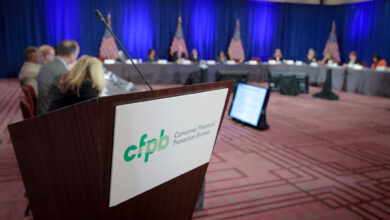What happens next for mortgage lenders after the Fed’s rate cut?

“If we were to take the worst levels of 2023 spreads and include them today, mortgage rates would now be 0.58% higher,” Mohtashami wrote. “While we are far from average in terms of spreads, the fact that we have seen this improvement this year is a plus.”
Over the past year, the development of mortgage interest rates seemed like a roller coaster ride. According to HousingWire’s Mortgage Rates Center, the 30-year conforming rate peaked at 7.87% in late October 2023, but fell to 6.83% just two months later. More peaks and valleys followed before this year’s peak of 7.58% was reached on May 1.
Since late July – when the Fed signaled its intention to cut rates – the 30-year conforming rate has fallen from 7.02% to 6.27% on Friday.
The lender’s perspective
The reaction to the Fed’s rate cut has been muted. Some real estate agents believe interest rate cuts could be offset by strong demand leading to more bidding wars and higher sales prices. And because the Fed’s action was announced well in advance, mortgage lenders and investors had already priced the cut into current interest rates.
In commentary published on Wednesday after the decision, Zillow Home Loans Senior economist Orphe Divounguy said mortgage payments on the typical home purchased today would cost $100 less per month than a home purchased in May. In addition to further expanding their budgets, buyers also have more offerings to choose from, as Zillow data shows the number of active listings increased 22% in the past year.
But Divounguy also expects demand to rise, which will not improve affordability.
“With lower mortgage rates, buyers are likely to face more competition than they normally would in the fall, when the market typically cools,” he wrote. “Lower rates should bring more buyers into the market than sellers.”
Ryan expressed optimism about purchasing and refinancing loans based on consumer actions in the first few days after the Fed meeting. While mortgage rates didn’t drop immediately, Better has seen an increase in web traffic and leads since Wednesday.
“Given our technology and the way people are making financial decisions today, there’s quite a few people starting to get out there,” Ryan said.
“If you run a store, you need people to come into the store and look around. Not all of them are going to buy, but if no one comes into the store, I can tell you your sales are zero. If 100 people come into your store, it doesn’t mean your sales are 100, it means people are actually coming into the store and I think we’ll definitely see more people re-engage with the market.”
Although fears of a recession in the US have been circulating for some time, the fact that inflation is approaching the Fed’s target of 2% per year makes the issue less prominent. Policymakers appear to be focusing much more on the labor market, which has cooled recently, but Ryan said that “as an economy we are still at full employment” and that “the employment picture is quite good by historical standards.”
As for whether the Fed’s policy has been too restrictive, Ryan conceded that a rate cut would have been welcome sooner than it actually came.
“Yes, they were a little late, maybe on both sides – late to walk and now late to cut,” he said. “We are biased; we are in the residential construction business. These high rates and lack of supply have crushed us as an industry. But that said, with your taxpayer/citizen hat on, they did a pretty good job in a pretty tough situation.”




